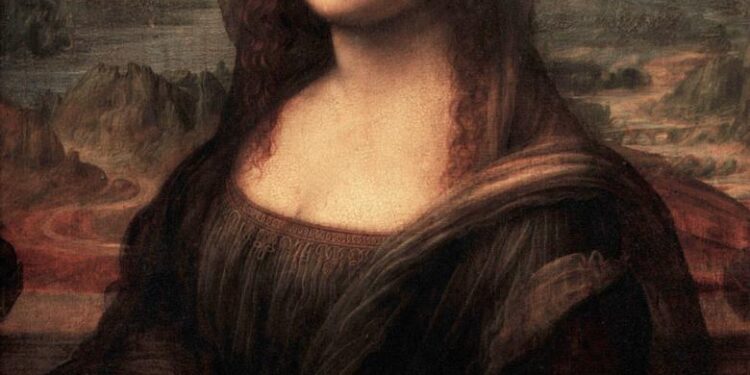France has announced a new policy imposing a ‚ā¨10 entrance tax on non-European visitors wishing to see the Mona Lisa at the Louvre Museum. The measure, aimed at managing increasing tourist numbers and generating additional revenue for cultural preservation, marks a significant shift in access to one of the world’s most iconic artworks. This article explores the implications of the tax for international art lovers and the broader impact on France’s tourism and cultural sectors.
France Implements Entry Fee for Non-European Visitors at Louvre Museum
Beginning this summer, visitors from outside the European Union will be required to pay a $10 surcharge in addition to their standard admission ticket to explore the famed Louvre Museum in Paris. This new policy aims to generate additional revenue to support the maintenance of the museum’s vast collections and manage the increasing number of international tourists. The fee specifically targets access to iconic works, including Leonardo da Vinci’s Mona Lisa, one of the museum’s prime attractions drawing millions annually.
The surcharge applies exclusively to non-European visitors aged 18 and above. Those exempt from this fee include:
- Residents of European Union member states
- Children under 18 years
- Students enrolled in accredited European universities
- Visitors with disabilities and their companions
This move is part of a broader strategy to balance cultural accessibility with conservation costs, reflecting ongoing debates about funding for heritage sites. Early reactions from travelers and advocacy groups suggest a mixed response, with some expressing concerns about potential impacts on tourism numbers.
| Visitor Category | Admission Fee | Surcharge |
|---|---|---|
| EU Citizens (18+) | $20 | $0 |
| Non-EU Visitors (18+) | $20 | $10 |
| Children (Under 18) | Free | $0 |
| Students (EU Universities) | $10 | $0 |
Impact of the New Tax on International Tourism and Cultural Access
Introducing a $10 tax specifically targeting non-European visitors at the Louvre marks a significant shift in how cultural heritage is monetized in France. Critics argue this could dampen the enthusiasm of international tourists, especially those for whom art and cultural access represent a key motivation for travel. There is concern that the extra fee might dissuade casual visitors or those with limited budgets, potentially decreasing foot traffic to one of the world’s most iconic museums. Conversely, supporters believe the levy could provide much-needed funds for preservation efforts and enhance visitor experiences without overly burdening European residents.
Travel industry experts warn that the tax may reshape global tourism dynamics, particularly impacting countries with a high volume of non-European visitors. Airlines, tour operators, and hospitality businesses are closely monitoring the situation, anticipating shifts in demand that could ripple through the sector. The table below highlights key stakeholder concerns uncovered in recent surveys:
| Stakeholder | Concern | Potential Impact |
|---|---|---|
| Tourists (Non-Europeans) | Additional Costs | Reduced Visits or Shortened Museum Time |
| Louvre Management | Revenue Generation | Improved Preservation Funding |
| Local Businesses | Lower Tourist Spending | Decreased Sales in Surrounding Areas |
| Travel Agencies | Package Pricing Complexity | Need for Pricing Adjustments |
Ultimately, the real test will be whether the balance between revenue generation and cultural accessibility can be maintained without alienating global visitors. This new policy may set a precedent for other major cultural institutions considering levies to support their operations amidst growing international competition.
Strategies for Non-European Tourists to Navigate the Mona Lisa Admission Fee
With the newly implemented $10 surcharge for non-European visitors at the entrance to view the Mona Lisa, travelers are seeking smarter ways to manage their expenses without missing this iconic masterpiece. One effective approach is purchasing combination tickets or tourist passes that bundle multiple Paris attractions, often diluting the impact of the additional fee by offering overall cost savings. Another strategy is to book timed entries during less crowded hours when certain passes or discounts might be more readily available. Additionally, non-European visitors can consider guided tours that incorporate the Mona Lisa viewing, as some tours absorb the surcharge within their package prices, providing convenience and potential savings.
Planning ahead is crucial in navigating this surcharge smoothly. Many official websites now highlight options for advance online booking, allowing visitors to bypass long lines and sometimes access exclusive discounts. Utilizing mobile apps endorsed by the Louvre or Paris tourism can also alert users to last-minute deals or group rates. Below is a quick comparison of popular entry options with approximate costs, including the new surcharge:
| Entry Type | Base Price (EUR) | Surcharge (USD) | Total Cost Approx. |
|---|---|---|---|
| Standard Ticket | 17 | 10 | 27.50 USD |
| Combined Museum Pass (3 days) | 52 | 10 | 67 USD |
| Guided Tour Package | 40 | Included | 40 USD |
- Book online early: ensures entry and may unlock discounts.
- Look for package deals: experience multiple attractions economically.
- Consider tours: surcharge often built in, simplifying payment.
- Use official apps: stay updated on fees and ticket availability.
Future Outlook
As France moves forward with its plan to impose a $10 tax on non-European visitors to view the Mona Lisa, the change underscores ongoing efforts to balance cultural accessibility with funding for preservation and tourism infrastructure. Critics and supporters alike will be watching closely to see how this measure impacts visitor numbers and the broader art tourism industry. The Louvre’s iconic masterpiece remains a powerful symbol of cultural heritage, now at the center of a new debate on the economics of global art appreciation.
















